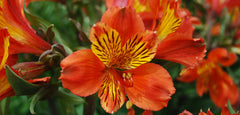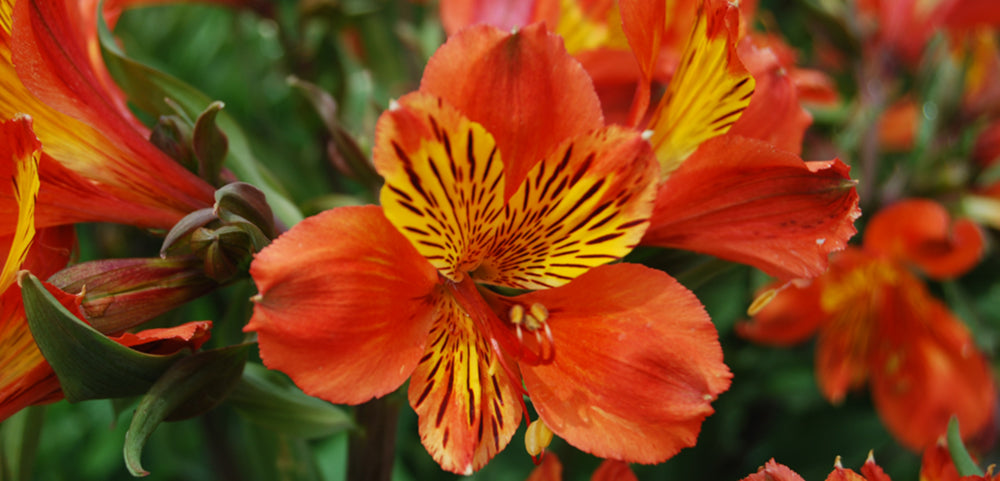Alstroemeria (Alstroemeria spp.)
Alstroemeria Plant Features
Once grown primarily for the cut flower trade, alstroemeria, also known as Peruvian lily, makes an outstanding perennial garden flower. These jewel-like beauties are prized for their long-lasting cut flowers that will look great in a vase for over two weeks. The pink, yellow, orange, white, purple, salmon, red, or bi-colored blooms appear in mid-summer and are attractively mottled or veined with contrasting colors. The plants grow 2 to 3 feet tall and are attractive to butterflies and other pollinators. Zones 6-10.Alstroemeria Questions?
We love to chat with other gardeners! Email us your questions and one of our perennial gardening experts will get back to you.
Alstroemeria Growing Instructions
Alstroemeria is a sun lover that appreciates a little afternoon shade in the hotter parts of the country. Native to Chile, alstroemeria can tolerate dry conditions, but does best in a rich, slightly moist soil. In Northern states, grow alstroemeria in containers and bring the plants indoors over the winter and store in a cool basement with minimal watering.If grown in containers, alstroemeria may require staking to prevent the plants from flopping over. Remove the faded blooms as they appear to encourage new crops of flowers. Be cautious when planting alstroemeria because the roots can be brittle and break easily.
This plant is not intended for human or animal consumption.
-
Water
Moist
-
Light
Outside: Sun
-
Colors
Orange
Pink
Purple
Red
White
Yellow
-
Special Features
Attracts butterflies
Complement your Alstroemeria
Asparagus FernAdd some Asparagus Fern to pots and planters to use as a filler in a bouquet of Alstroemeria.
Artemisia
The gray foliage of Artemisia blends well with the flowers of Alstroemeria.
Feather Reed Grass
Pair Alstroemeria with another upright perennial such as Feather Reed Grass. The grass will mimic the vertical form of the Alstroemeria and both can be cut for flower arrangements.





